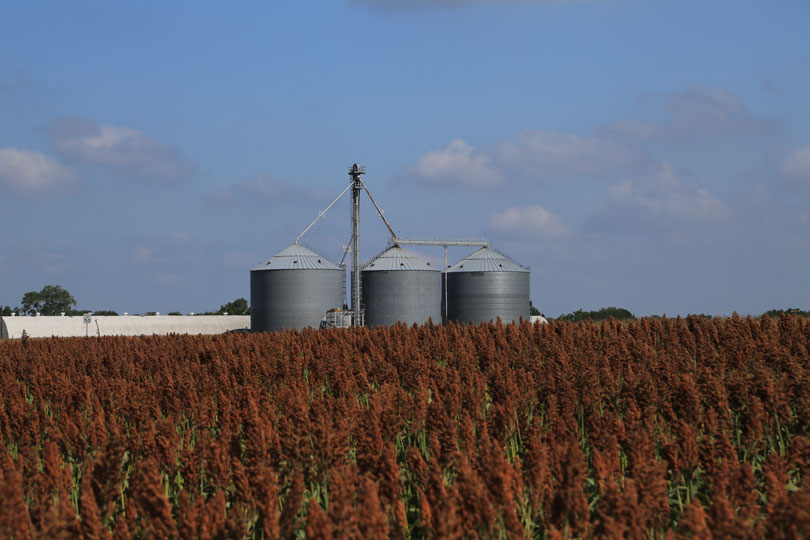By Jessica Domel
Multimedia Reporter
American farmers are forecast to grow more grain sorghum this year to keep up with rising demand.
Grain sorghum acreage in Texas will also likely show a modest increase, according to Wayne Cleveland, executive director of Texas Sorghum Producers.
“Market conditions are favorable for more planting of grain sorghum this year, particularly with the Chinese market as robust as it is,” Cleveland said in an interview with the Texas Farm Bureau Radio Network. “Also, we see a lot of potential in the biofuels industry with ethanol production.”
The Environmental Protection Agency recently published a proposed rule that would allow the use of grain sorghum oil in the production of biodiesel—providing another market for grain sorghum.
“That, coupled with China and some issues with other commodities, we do feel like producers will plant some more acres this year on the High Plains,” Cleveland said.
China uses grain sorghum to feed ducks, which are a popular food staple in the country, because it changes the quality of the meat and the size of the gizzard.
“That’s a big plus for our growers, because that’s not a market that, traditionally, we’ve been able to sell into. But now, I think we’re well-fit there,” Cleveland said. “The National Sorghum Checkoff is doing a lot of research on the way grain sorghum works in the Chinese liquor market, which is also called Baijiu. There’s a huge market there, as well as other international markets around the world, that continue to ask for grain sorghum for one particular reason, other than it’s the cheapest grain on the market.”
Increased education and control of the highly prolific and devastating sugarcane aphids has also prompted some farmers to plant sorghum.
“The good thing about the checkoff is it’s about producer education—a lot of it is—and I think our growers have come a long way in variety selection. Of course, a lot of that comes from doing variety trials with the checkoff dollars that we utilize,” Cleveland said. “We do see a dramatic decrease in the amount of sugarcane aphids that our farmers see. Our growers educated themselves. They have the right spray, and they know when to spray. Most importantly, they know to scout, which probably helps as much as anything.”
The combination of picking the right variety, scouting fields and spraying the right chemical at the right time has really helped sorghum farmers clear a large hurdle, Cleveland said.
“We do hear from more growers that they will plant more this year, because there is less sugarcane aphid out there to contend with,” he said. “It’s been a tough process, but it’s been good. Our growers are smart. They’ve educated themselves, and I think we’ll see those protracted acres again this year.”
About half of Texas sorghum is grown in the Rio Grande Valley and South Texas, but because the crop is so drought tolerant, it’s also grown in other areas of the state.
“Where we do see potential is on the Plains. Price has been good. Sugarcane aphid pressure is down. Some growers have told us they’re going to switch into sorghum for a couple of years, and we’re keenly aware of all that,” Cleveland said. “At the end of the line, our seed guys are telling us their sales are a little better this year. Their pre-sales are going well, so we feel real positive where we are. Growers are making decisions based on what they can grow and what works. Having a little higher PLC price this last year—I think we ended up with $1.18 a bushel—certainly is helping quite a bit to convince growers to grow more grain sorghum. A lot of things are adding up.”
In 2017, 99 million bushels of grain sorghum were produced on 1.5 million acres in Texas.

